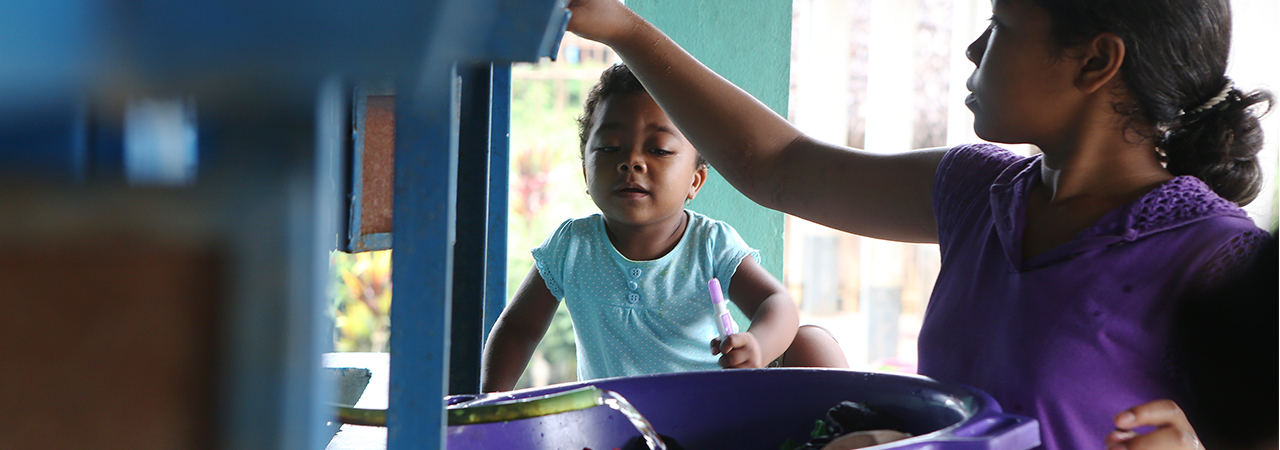

RANO HP (Rural Access to New Opportunities for Health and Prosperity/RANO HamPivoatra
Madagascar is rich in fresh water resources yet more than 60% of the island’s 23.2 million inhabitants do not have access to an improved water supply. That includes more than 70% of the most vulnerable living in rural areas.
The RANO HP (Rural Access to New Opportunities for Health and Prosperity) project built on the community-based work of local and international NGOs, as well as the private sector partners’ pioneering work in developing affordable, market-based water supply services in Madagascar.
PROJECT DETAILS
Official name of the project: RANO HP (Rural Access to New Opportunities for Health and Prosperity/RANO HamPivoatra)
Project years: October 2009-September 2013
Country: Madagascar
Value of project: $10,640,000
Names of donors and partners: USAID, CARE International, Caritas Madagascar, Voahary Salama, BushProof and Sandandrano
GOAL OF THE PROJECT
The goal of the RANO HP project was to provide rural communities in Madagascar broad access to reliable and economically sustainable water and sanitation services for health, security and prosperity.
NEED FOR THE PROJECT
The limited access to clean water, high rates of open defecation, improper handling of children’s stools and poor hygiene behavior has resulted in waterborne diseases, like diarrhea, being the second-leading cause of child mortality in Madagascar. A 2002 United Nations Children’s Fund (UNICEF) supported study found that 3.5 million school days were lost per year due to diarrhea and other preventable water related illnesses. The national DIORANO[1]-WASH Strategy paper published in 2003 estimated that the total burden of water and sanitation related illness on the Malagasy economy was more than 300 times greater than the amount of public money being invested in the sector. Further compounding the problem, poor natural resource management has resulted in the loss of more than 80% of the island’s natural forest cover, which has contributed to the pollution and seasonal variability of surface water and aquifers. Water supply systems are also at risk of being exploited for human consumption.
HOW WE DO IT
The project mobilized the private sector (ministries), the private sector (investors) and the community to work together to provide access to clean drinking water. Through the project, more than 680 rehabilitated or new, protected water points were installed. We promoted hygienic behaviors, the use of family latrines, WASH-friendly schools and health centers. With our help, communities, in general, became better organized in managing their water supply systems.
RANO HP had the ability to join economic and financial aspects with social needs. There was improved access to credit for consumers and suppliers of water and sanitation services, allowing for latrine construction and more business opportunities for young masons.
BY THE NUMBERS
- 62,325 people have access to drinking water
- 97,685 people use latrines constructed by households/communities without subsidies
- 241 villages certified as Open Defecation Free
- 26 communes established Community Water & Sanitation Business Plans
- 5 private operators involved in the management of supply systems for drinking water, with legal contracts with the Ministry of Water for 12 systems – private/public partnership
- 1,001 metered connections to the main infrastructure - public, private and social (for 2-5 households)
- 2,472 people adopted the 3 key WASH messages (hand-washing with soap, using latrines and water treatment)
- 67 latrines constructed from MFI (Monetary Financial Institutions) credits - S12,910
SUCCESS STORIES
Communities in Madagascar are enjoying better health since, in many cases, potable water is available just outside their homes and latrine use is up. The RANO HP project improved water supply to hundreds of thousands of people. One of those was Mrs. Raharisolohanitriniala Holdefa, a widow and a mother of 5 who used credit to invest in a new latrine.
"After using my previous open-pit latrine I had to take a shower to remove the smell. During periods of rain, feces could be seen floating in the runoff water," she said. With credit she invested in an alternating double-pit pour flush latrine with sealed pits and a hygienic ceramic slab.
Florette lives with her family among about 1,500 people in a farming community called Ivandrika in the southeast region of Madagascar. She joined some of her friends in forming a Village Savings & Loan Association, or VSLA. As a member of a VSLA, Florette was able to take a loan to pay her medical bill – about $25. She paid back the loan in only three months.
Later, Florette heard a Community Health Worker (CHW) speak. The CHW shared advice and messages about hygiene and sanitation. Florette was convinced that she could help her family be healthier if they started using a latrine. With her own money, she and her family built a simple latrine and began using it. After about six months, Florette was able to pay a mason to replace the wooden floor of her latrine with a concrete slab, which is easier to keep clean.
When RANO HP and local stakeholders explained to Florette that the town would soon offer the chance to have water piped to her home, she wondered how much it would cost. She didn’t think she could afford it, until they explained that she could get a “social connection,” if her neighbors were interested in sharing one tap stand. The company selected to manage the water supply system would offer them a lower rate per liter than a private connection. Florette and some of her fellow VSLA members decided to get connected.
OTHER CRS RESOURCES
2. Madagascar Taps Public-Private Water System
[1] DIORANO means “clean water’ and is the national platform for all water and sanitation stakeholders.

